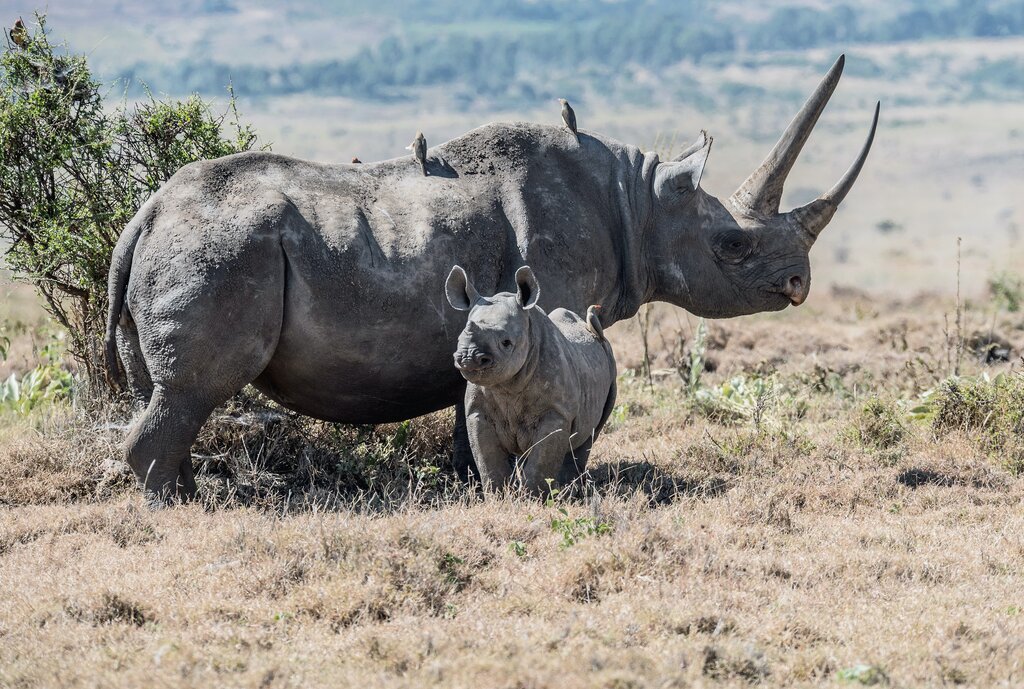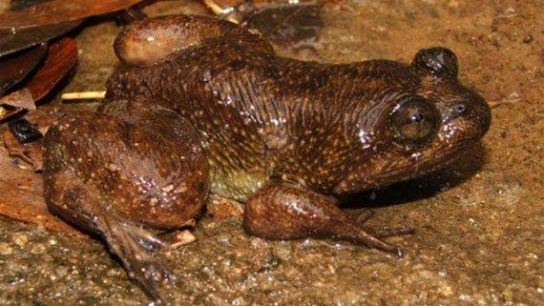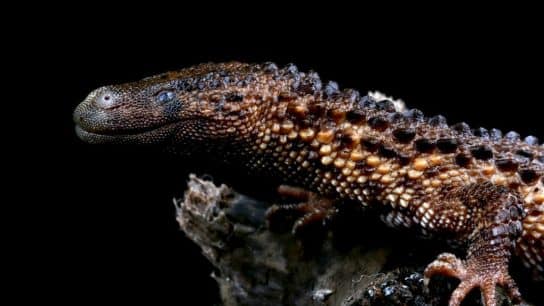Black rhinos, otherwise known as the hook-lipped rhino, is one of two species of rhinoceros native to Africa (the other being the white rhino). Although once found across sub-Saharan Africa, rampant poaching has consequently limited the geographical distribution of the remaining black rhino population. Today, 98% of all black rhinos are located in just four countries: South Africa, Namibia, Zimbabwe and Kenya. They inhabit a range of terrains, from tropical grasslands, forests and wetlands, to deserts and xeric shrubland. Once comprised of four subspecies, the Western black rhino (Diceros bicornis longipes) was driven to extinction in 2011 by the senseless, illicit demand for rhinoceros horn.
—
Family: Rhinocerotidae
Genus: Diceros
Species: Diceros bicornis
Subspecies: Diceros bicornis minor (Southern Central black rhino), Diceros bicornis bicornis (South Western black rhino), Diceros bicornis michaeli (East African black rhino)
IUCN Status: Critically Endangered
Population: Over 5,600 individuals
1. Appearance
Of the two African rhinoceros species, the black rhino is the smaller kind. Adults reach a height of 1.6 metres and a weight of 900-1,350 kilograms, and usually have a smaller head and neck hump than their “white” counterparts.
Despite their nomenclature, black and white rhinos are both dark grey in colour; although their tendency to wallow in dirt, mud and dust, which varies in soil condition throughout native rhino habitats, can cause a slight difference in skin colour. The key distinguishing feature between the two species is actually the shape of their mouths. Whilst the white rhino has a wide, square-shaped lip, the black rhino instead sports a pointed, prehensile upper lip (hence the common reference of square-lipped rhinos and hook-lipped rhinos). The unique lip shape of each species is an evolutionary adaptation to suit their distinctive feeding habits.
Black rhinos are one of three species of rhinoceros that have two horns, which can vary in shape and size depending on geographical location. Horn size also differs between genders, with males carrying thicker horns and females displaying thinner, longer ones. For most fully-grown individuals, the anterior horn is typically longer than its posterior horn. In rare instances, some black rhinos develop an additional posterior horn, although it is much smaller than the two principal horns.
Oftentimes confused as ivory, which is derived from elephant trunks, rhino horns are actually made of thousands of fine, compressed strands of keratin. Similarly to our hair and nails, a rhino’s horns will continue to grow throughout their life, extending by up to eight centimetres per year, and can reach lengths of 150 centimetres. Although incredibly solid and sturdy, a black rhino horn can be damaged or split if used for fighting.

2. Diet and Habitat
Black rhinos are herbivorous browsers, acquiring the majority of their sustenance from picking leaves, branches, twigs, tree bark, and fruits off trees and shrubs. They have been known to display a certain fondness for certain vegetation, such as acacia shrubs. It is due to this particular feeding behaviour that the black rhino developed its distinctive lip shape, as their pointed, prehensile lip allows them to grasp branches, hold foliage and pick fruits with ease. Their bite produces a neat, angular mark on woody vegetation, similar to pruning shears. In contrast, the white rhino is a grazer, walking with its large head, muscular neck and square-shaped lip close to the ground.
Black rhinos are most likely found in savannahs with nutrient rich soils, low-growing trees, woody vegetation, herbs, and palatable succulents. When searching for new territory, the black rhino also requires accessible sources of water and mineral licks within an eight to 16-kilometre radius of their residence. Unfortunately, the increasing incidence of secondary pesticide and plant chemical contamination often renders much of the black rhino’s preferred vegetation unpalatable.
3. Behaviour
The timid, elusive black rhino tends to feed between dusk and dawn, remaining within a relatively small geographical range where it can find abundant vegetation and water. Due to their poor eyesight, black rhinos rely on their keen sense of smell and hearing to navigate, locate palatable foliage, and identify the scent trail of fellow black rhinos. During daylight hours, these magnificent creatures lay beneath shaded areas and wallow in water holes, utilising the mud as a natural source of protection from pesky bugs and UV rays. Despite their immense size, the black rhino can also run incredibly fast, reaching speeds of 55 kilometres per hour through dense scrub and bushland.
Once believed to be strictly solitary and aggressively territorial mammals, black rhinos have now been proven to be semi-solitary creatures depending on the habitat. Groups of black rhinos have been observed engaging in social activity around waterholes, and lone females will often group together until they are able to mate. Male calves tend to leave their mothers at the age of three, yet are not able to contend for territory or mates until they reach the age of 10 to 12. Amongst male adults, a hierarchy of dominant and subordinate individuals exists, with conflicts over land and mates often resulting in the injury, exile, or death of the physically weaker competitor.
Since the often-solitary black rhino’s eyesight is incredibly poor, individual and species recognition primarily occurs through the creature’s olfactory sense. Urine spraying is a common and rather critical method of communication for black rhinos, as the practice allows males to scent-mark their territory and females in oestrus to attract neighbouring males. These urine sprays can reach distances of three to four metres and are most commonly located along feeding routes. Unsurprisingly, middens (heaps of dung) also act as scent markers. Like most mammals, black rhinos also have distinctive scent glands on their skin which secrete semiochemical compounds such as pheromones. When the black rhino rubs its skin against a tree or a rock, the residual scent that lingers on the object is able to convey information about that particular rhino’s social status, mood and sexual inclination.
4. Ecosystem Services
The black rhino, and rhinoceroses in general, have been widely described as a keystone species, meaning those which hold a disproportionately significant role within an ecosystem. This is primarily due to the fact that the rhino is a mega-herbivore and therefore alters its surrounding habitat in a considerable way, consequently affecting a myriad of neighbouring organisms.
The most discernible service provided by the black rhino is the way in which the species shapes and maintains its surrounding landscape. Considering each individual black rhino consuming approximately 50 kilograms of vegetation per day, these incredible creatures control the overgrowth of plants and create pathways through dense shrubland to facilitate the migration of numerous species. The ensuing 20kg of dung deposited across the black rhino’s territorial range not only facilitates soil fertilisation and seed dispersal, but also provides sustenance to a range of animals. Dung beetles lay their eggs within balls of rhino faeces, which are then consumed by small animals such as mongooses once the beetle larvae develop. Large birds such as the crested guineafowl also benefit greatly from rhino excrement, scratching through middens for undigested insects and seeds.
Additionally, black rhinos maintain symbiotic relationships with animals such as oxpeckers and terrapins, who feed on the ticks and parasites that inhabit any open wounds that the rhino might have. Oxpeckers have also shown to pre-emptively alert rhinos to approaching danger. In recent years, the intense protection awarded to the rapidly declining black rhino population has actually benefited numerous neighbouring species which have similarly threatened by poaching. The delineation of protected land for rhino conservation inevitably covers the territory of vulnerable species such as pangolins and elephants, thereby potentially safeguarding the wellbeing of numerous animals in one fell swoop.
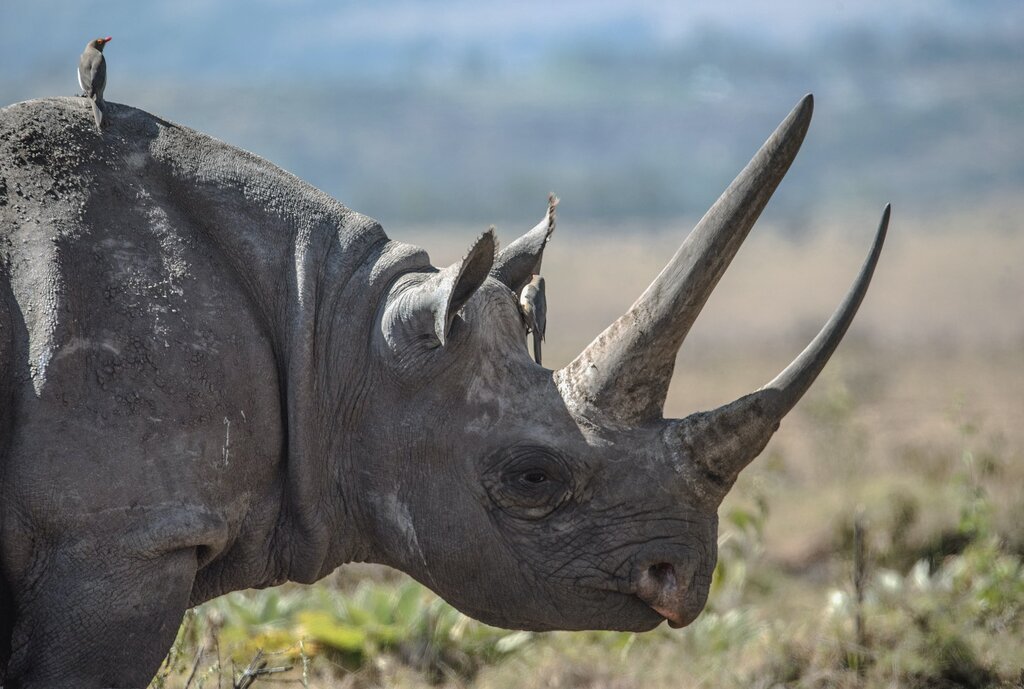
5. Threats
Plagued with a status of ‘Endangered’ under the International Union for Conservation of Nature (IUCN) Red List since 1986, the black rhino suffered a population decline of 96% between 1970 and 1993, culminating in a status of ‘Critically Endangered’ by 1996. From an estimated 100,000 black rhinos in the early 20th century, a mere 2,300 individuals remained by 1994. The primary threat faced by the black rhino has been rampant poaching, fuelled by the illicit international trade of rhino horn. In 1996, the introduction of intense conservation efforts led to a promising increase in the black rhino population, however recovery rates suffered a serious setback with the escalation of poaching activities in 2007.
The hunting of black rhinos commenced in the 19th century as a consequence of increased European influence in Africa. At the time, hundreds of thousands of black rhinos roamed across sub-Saharan Africa, yet widespread poaching resulted in a residual population of approximately 65,000 by 1970. It was then that the plight of black rhinos took a dramatic nosedive as demand for rhino horn from key consumer countries, such as China, Vietnam and the Middle East, skyrocketed.
In some traditional Asian medicinal practices, powdered rhino horn is utilised as an unsubstantiated cure for a myriad of illnesses from fevers, hangovers and impotence, to cancer. In Vietnam, the possession or consumption of rhino horn is also seen as an indicator of social status and wealth, recently serving as the party drug of choice amongst Vietnamese youths. In North Africa and Middle Eastern cultures, rhino horn is used to produce ornamental handles for ceremonial daggers, or jambiyas. Recently, it has become a popular material for high-class, hand-carved crockery as well.
Prohibitions on the international trade of rhino horn, which were instituted in the 1980s, were surprisingly effective in curbing the market initially. In 1993, following extensive external pressures and sanctions from the United States, China banned the trade and use of rhino horn in traditional Chinese pharmacopoeia. The value of rhino horn in Asian black markets dropped from approximately USD$20,000 per kg to about $500, and just 13 to 15 black rhinos were poached every year in South Africa from 1990 to 2007.
Nevertheless, this period of relative stability did not endure, as in 2008 the number of black rhinos poached in South Africa rose to 83, and by the following year 122 black rhinos had been illegally hunted for their horns. The upwards trend in poaching incidents continued at an exponential rate, reaching a total of 688 black rhino deaths in 2012, and was accompanied by a USD 60,000 spike in the value of rhino horn. The exact cause behind this sudden surge of poaching is unclear, but many speculate it emanated from a rumour circulating within Vietnam that an elixir containing crushed rhino horn cured an unnamed former politician of his cancer.
Although the degree of culpability held by this unfounded rumour is unclear, it unfortunately coincided with a series of social, economic and political factors which continue to fuel consumer demands for rhino horn within Asia. Lack of adequate healthcare and cancer treatment centres in Vietnam, coupled with a 20 to 30% yearly increase in cancer diagnoses, inevitably impel local populations to seek alternative remedies for their ailments. Another factor is the rapid and ongoing economic development of countries such as Vietnam and China, where the consumption of wildlife is embedded within national culture. This has consequently led these increasingly affluent populations to utilise exotic wildlife trophies as indicators of wealth. A representative of the Convention on International Trade in Endangered Species of Wild Fauna and Flora (CITES) noted that the increase in wealth within Southeast Asia is effectively “inflating a bubble of demand for rhino horn”.
As a result of rising demands for rhino horn, increasingly frequent and violent poaching attempts have placed an enormous amount of pressure on conservation efforts within Africa. Already hindered by political instability, poverty, and war, escalating threats against black rhino populations have led to a myriad of novel obstacles for conservationists, mainly: increased costs for rhino protection and surveillance; and greater risks for guards, patrol teams, and sanctuaries. Consequently, reports of corruption amongst rangers, government officials, law enforcement and magistrates have increased substantially over the past few years, and many private owners have abandoned their animals. Since 40% of all black rhinos currently reside on privately-owned land, this perception of the species as a costly and risky animal to maintain increases their vulnerability to poaching.
In October 2018, China dealt a massive and unexpected blow to conservationists by partially reversing its 25-year old ban on the trade of rhino horn and tiger bones. The State Council announced its authorisation for the use of captive rhino horns in scientific, medicinal and cultural capacities, allowing qualified hospitals and doctors to conduct medical research with the illicit substance. Organisations such as the World Wildlife Fund (WWF) described the decision as an “enormous setback” with “devastating consequences” for the remaining rhino populations across the world. Many argue that the legalisation of the endangered species trade will cause confusion amongst locals and law enforcement officials when determining whether products are legal or illegal, thus further inciting demands for rhino horn.
The onset of the COVID-19 pandemic in early 2020 proved to be a temporary advantage for rhinos across Africa, as widespread restrictions on travel and international trade had a significant effect on poaching and wildlife trafficking. The number of rhinos poached in South Africa dropped by 34% between 2019 and 2020, marking the sixth consecutive year of a promising downward trend in poaching incidents. Nevertheless, as foreseen by many, this blessing was short-lived as the number of poaching incidents increased by 15% in 2021. Of the 451 rhinos poached in 2021, 327 resided on government parks and 124 were from privately owned properties. In a statement provided to the BBC by Dr Jo Shaw of WWF, she noted that, “…the apparent reprise provided by lockdown restrictions in 2020 was only a temporary pause. To stop rhino poaching, we need to address the factors that enable wildlife trafficking syndicates to operate”.
6. Conservation Efforts
As aforementioned, the incredible work undertaken by governments, NGOs and local conservationists within Africa have led to a promising increase in the population of black rhinos. From a meagre 2,410 individuals in 1995, approximately 5,630 black rhinos now roam the national parks and sanctuaries established for their protection. Despite the revival of extensive rhino poaching in 2007, the species maintains an annual population increase rate of 2.5%. Although the black rhino has been listed under Appendix I of CITES since 1977, as well as under a range of domestic legislative measures effectively banning the poaching and trade of the species, it is those who have been working on the frontline since the 1990s that should take credit for this achievement. In a statement issued by the IUCN, Directing General Dr. Grethel Aguilar noted that, “while Africa’s rhinos are by no means safe from extinction, the continued slow recovery of Black Rhino populations is a testament to the immense efforts made in the countries the species occurs in, and a powerful reminder to the global community that conservation works. At the same time, it is evident that there is no room for complacency as poaching and illegal trade remain acute threats”.
One of the most critical protective measures implemented within Africa has been the translocation of black rhino populations to enclosed sanctuaries and conservation areas, where they are protected under armed guard. This process of translocation involves moving individuals from populations with high densities to areas which historically accommodated rhinos, in an attempt to safeguard subspecies and promote breeding. International organisations have aided local governments greatly by providing training for guards, equipment for monitoring and surveillance (such as radios, vehicles, drones and infrared cameras), and electronic tracking tags to monitor the animals. This proximity to the species has further enabled researchers to develop a deeper understanding of the species’ biological and ecological background, with the aim of managing subpopulations for optimal breeding performance and swift population growth. In Kenya, the State Wildlife Service forensic laboratory has also been developing a DNA database, RhoDIS, with the aim of analysing the DNA of intercepted rhino horns and linking them to the poached animal from which they originated. This technology, coupled with stronger border patrols within Africa and Vietnam, could potentially aid in the prosecution of perpetrators and thus hinder the wildlife trafficking trade.
Due to the influence of local communities on the welfare of black rhino subpopulations, NGOs and animal welfare organisations are increasingly involving these communities in conservation efforts through education campaigns and by offering alternative sources of income. In 1996, Namibia incorporated into its constitution the right to the protection of the environment, thereby enabling local communities to create conservatories on their land for the protection and responsible use of their natural resources. After extensive training in wildlife conservation, monitoring, eco-tourism, and resource management, provided by local governments and NGOs, several communal lands have been designated as conservatories for free-roaming black rhinos and other endangered species. The benefits and services provided by black rhinos to these communities serve as an incentive for their continued protection, whilst enabling local governments to focus their efforts and funds on safeguarding subpopulations located within national parks. By decentralising the protection of remaining black rhino groups, the government of Namibia has created a network of conservationists to better care for the animals, hinder poaching attempts and prevent the extinction of any subspecies. The 86 conservancies located within Namibia cover 155,000 square kilometres, constituting 20% of the country, and employ over 700 guards.
Education and awareness-raising campaigns have also been used extensively within key Asian countries to dispel myths regarding any healing properties associated with rhino horn. Studies conducted within Vietnam between 2014 and 2016 indicated a 25% decrease in the number of respondents who believed that rhino horn cures cancer, and a 43% increase in respondents who were aware that rhinos are brutally killed solely for their horn. At the inception of the study, only 19% of respondents knew that rhino horn is composed of the same substance found in our hair and nails, namely keratin. In 2016, the African Wildlife Foundation and WildAid collaboratively launched a campaign titled “Nail Biters”, in which celebrities can be seen biting their nails to portray the message that “rhino horn has nothing your own nails don’t have”. Awareness on the composition of rhino horn subsequently increased by 258%.
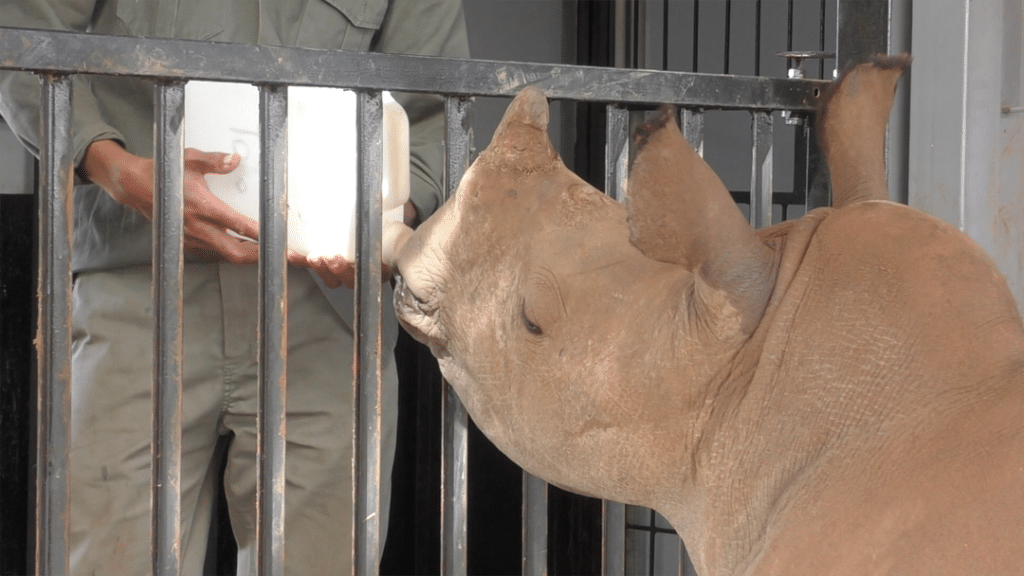
NGO Spotlight: Helping Rhinos’ Zululand Rhino Orphanage
Established by the Zululand Conservation Trust and the Helping Rhinos organisation, the Zululand Rhino Orphanage is the only dedicated rhino orphanage in KwaZulu-Natal, South Africa. Due to the rise in rhino poaching incidents over the past decade, an increasing number of rhino calves are found orphaned after poachers mercilessly kill and dehorn their mothers. Infant rhinos require intensive care, with feedings every two hours, and thus are unable to support themselves in the wild. The work carried out by the Zululand Rhino Orphanage is therefore incredibly important for the protection of rhino calves that are left injured and alone. Having started with two black rhinos, two white rhinos, and a baby hippo as the orphanage’s initial residents, the centre has now doubled their capacity to care for seven rhinos and two baby hippos. With sufficient rehabilitation, the orphanage hopes to release their resident rhinos back into the wild and have successfully released four rhinos since their inception.
Its parent organisation, Helping Rhinos has also been active in establishing “Rhino Strongholds”; areas which provide protection and security for free-roaming rhinos, with minimal human intervention to encourage natural behaviours, migration, and diverse breeding. By working with local communities to restore the black rhino’s natural habitat and establish wildlife corridors for safe migration, Helping Rhinos ensures the protection of rhinos through anti-poaching patrols, aerial surveillance and K-9 units, supports rhino habitat restoration, scientific research and population growth, all whilst improving the livelihoods of local communities. Helping Rhinos is currently working on three Rhino Stronghold projects, the Bushman’s River Conservation Corridor in South Africa, the Greater Zululand Reserve in Northern KwaZulu-Natal, and the Old Pejeta Range Expansion in Kenya.
What Can You Do
- Support a Rhino Organisation. As mentioned, the increasing rate of rhino poaching in Africa has led to a rise in the costs of protecting these magnificent animals. Support the numerous NGOs and local organisations involved in safeguarding black rhinos, such as Helping Rhinos and the International Rhino Foundation, by donating to any of their projects or campaigns.
- Raise Awareness. Despite a general global awareness on the plight of black rhinos, many are not conscious of the extent to which rampant rhino poaching continues across Africa and Asia. Let your family and friends know the threats that rhino species face today, and encourage them to support the cause.
- Boycott Rhino Horn Products. Whilst it may seem like an obvious solution, steady consumer demands indicate that many continue to purchase the illicit product. If you know anyone who uses or possesses rhino horn, let them know of the consequences of participating in the illegal trade, both legal and ecological.
Featured image by: David Clode/Unsplash
You might also like: 7 Fascinating Facts About Rhinos You Might Not Know About










